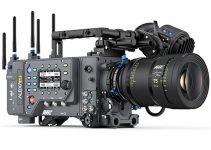Editing can be one of the most time-consuming aspects of any production. Anything a filmmaker can do to speed up their editing workflow is helpful. If you are looking to up your efficiency with Premiere Pro, DaVinci Resolve, or any other NLE, there are plenty of things that even experienced editors can consider to get a speed boost.
If you want some help speeding up your edit, Parker Walbeck and Landon Bytheway of Full Time Filmmaker recently published a video describing 10 tips to help you edit faster.
As working professionals these guys know that every second saved is beneficial to running a business and now they want to help you out by walking through their best thoughts on how to work faster in Premiere Pro, though a lot of these suggestions will work for any NLE.
1. Use the Proper Hardware
Premiere Pro is extremely demanding in general, and the biggest thing you can do to speed up your editing is to make sure your computer is fast enough. All software has a set of minimum specs, but you should be pushing well beyond that for good performance.
Lots of components work together for this and you can wreck performance if one of these is significantly slower than the rest. In the video they emphasize the importance of fast storage (SSD), processors, memory, and GPUs.
2. Shoot to Edit
Pre-production can do wonders for your post-production.
If you want to edit faster having a good plan with storyboards and an outline or script means that when you actually sit down in front of your computer to edit you already know what shots you want to put where.
Less scrubbing through tons of shots to figure out a plan and more getting things on the timeline.
3. Use an Edit-Friendly Codec
Many cameras, especially mirrorless and drones, record internally using heavily compressed codecs such as H.264 or HEVC. This is great for your memory cards but terrible for editing.
Being heavily compressed means your computer has to do some work to process and render out each frame and every time you add something to the footage it’ll struggle more.
Before you start editing if you create proxies in an edit-ready format like ProRes or DNx you will see everything speed up.
4. Drive Speeds Matter
This calls back to tip #1. Even with fast computers, if you have slow hard drives then you can only work as fast as the drive.
Opting for fast SSDs with faster connections such as Thunderbolt 3 will make sure you aren’t limiting yourself. Check the rated speeds before you buy and then verify with testing software when you get them.
5. Proper Data Management
Having proper backups and sensible folder structure will help you work more quickly too. If you lose files or have a drive go down during an edit, a proper backup can get you back up and running very quickly.
They recommend a tool like Carbon Copy Cloner to do the job for you. As for folder structure, there are almost too many ways to do it so make sure you have something that works for you.
6. Keep an Asset Library
This will take time to build up, but you should keep a neatly organized library of music, sound effects, titles, LUTs, etc. that you can access right away if you need them.
This is quite straightforward I think and is nice to have even if you aren’t a full-time editor. Having a set of effects ready to go can mean you don’t have to go searching every time you want to add a small sound effect or need a quick grade on some footage.
7. Learn Keyboard Shortcuts
This can’t be emphasized enough. Shortcuts save time. Period. Take some time to learn them. This video shows off their favorites, such as “I” and “O” for marking in and out points, respectively.
There are way too many to mention here so watch this video and even go find some others.
8. Creating/Buying Presets
Love ‘em or hate ‘em, the whole point of presets is to save time. It is possible to make them yourselves and it is recommended if you have the time. It’ll help you batch process a lot of footage that needs the same changes. You can also buy presets to save even more time.
9. Assembly Line Method
You should be focusing on a specific portion of your timeline as opposed to rewatching everything after every time you add something. Having a process, like the one outlined in the video, will help streamline your process and cut down on time spent rewatching your edit.
10. Remove All Distractions
Anyone who needs to work should cut down on distractions no matter what they do. By turning off the internet, separating yourself from your phone if need be, or anything else that might help. They emphasize how you have to get into the zone to edit effectively and it makes a ton of sense.
That is a lot of good information in one video. I highly recommend you go check it out because they go a lot more in-depth with each tip than I was able to do here.
[source: Parker Walbeck]
Disclaimer: As an Amazon Associate partner and participant in B&H and Adorama Affiliate programmes, we earn a small comission from each purchase made through the affiliate links listed above at no additional cost to you.


